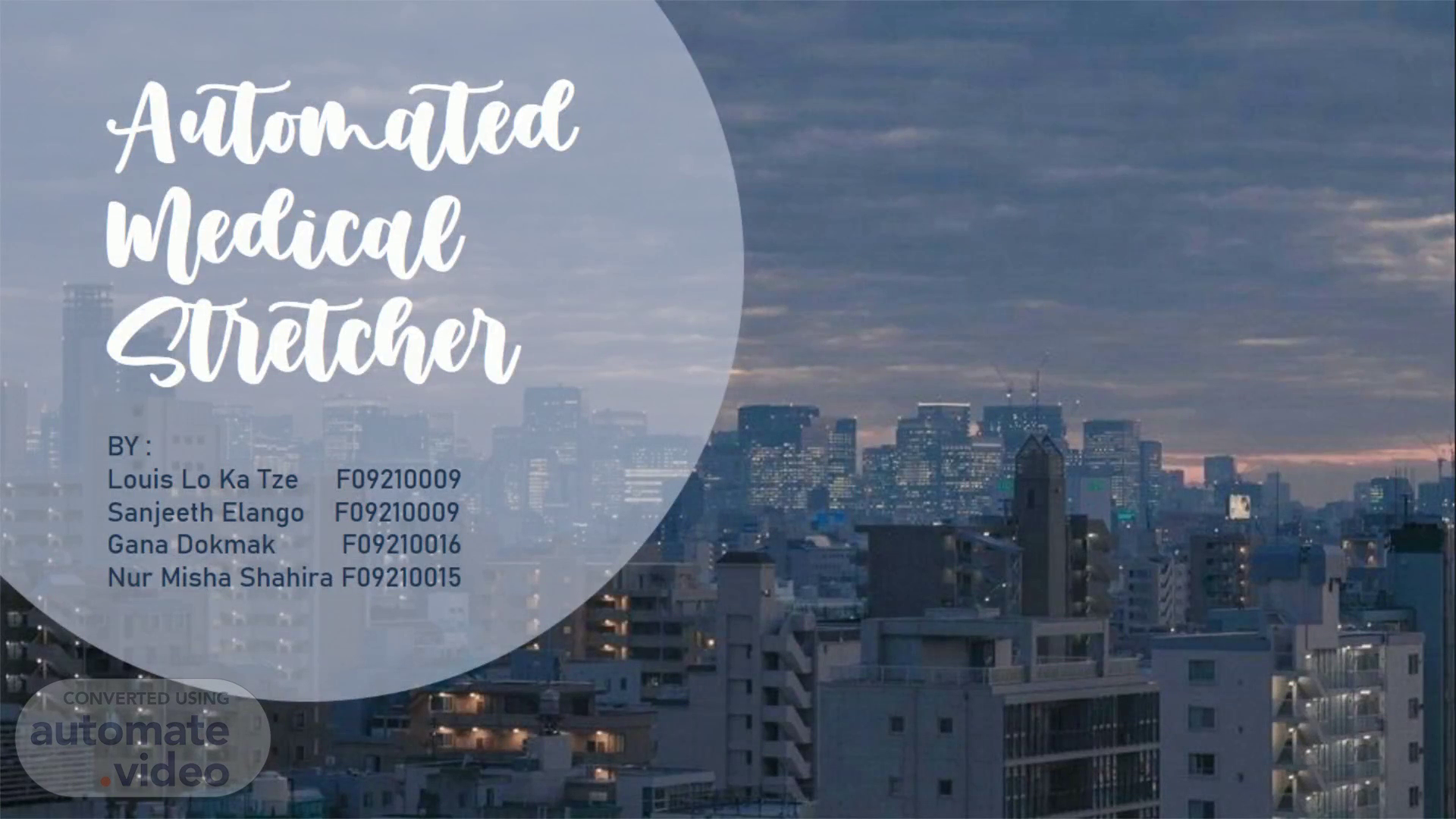
PowerPoint Presentation
Scene 1 (0s)
BY: Louis Lo Ka Tze Sanjeeth Elango Gana Dokmak F09210009 F09210009 F09210016 Nur Misha Shahira F09210015.
Scene 2 (4s)
71 it.
Scene 3 (8s)
This concept proposal is aimed at eliminating the physically demanding aspect of transporting a patient for the medical personnel. The chassis has similar height and width with regular wheeled stretchers, while still remaining simple in design. This allows for excellent use within the narrow spaces of hospitals, along with outdoor use as well as rough terrain, to an extent. The chassis comes with two hydraulic suspensions that allows for steerable wheel units to have a flexible change of direction in any of the mentioned environments..
Scene 4 (34s)
ihlliiuuvy •.
Scene 5 (37s)
Chassis comes with spring-assisted suspension to provide both safety of operations and comfort for the transported patient. Automatic mode allows for fully functional control by built-in Artificial Intelligence, also connecte$to a central command server of the hospital it is assigned to. Ideal for transportation of both low-priority and high- priority patients with minimat need of a human operator. Motorized mode allows for medical personnel to.operate the 'manually through steering with ergonomic handlebars and the relettronic torottle pr braking using simple only two separate buttons. The motor has lowrgear and high gear mode, along with reverse..
Scene 6 (1m 6s)
Manual mode allows for medical personnel to operate the machine fully manually in case of power failure or electronics failure. All main motor functions can be disengaged by medical personnel in times of emergency Chassis design is based on the EN1789-standard which allows for the stock stretcher to be replaced with any compatible stretcher;which. ålso •includes the frlding chassis and other accessories. 'Quick-Detach bed for fast and easy release of patient during emergencies..
Scene 7 (1m 25s)
Chassis comes with spring-assisted suspension to provide both safety of operations and comfort for the transported patient. Automatic mode allows for fully functional control by built-in Artificial Intelligence, also connecte$to a central command server of the hospital it is assigned to. Ideal for transportation of both low-priority and high- priority patients with minimat need of a human operator. Motorized mode allows for medical personnel to.operate the 'manually through steering with ergonomic handlebars and the relettronic torottle pr braking using simple only two separate buttons. The motor has lowrgear and high gear mode, along with reverse..
Scene 8 (1m 49s)
All four wheels are omnidirectional, allowing for the stretcher to have frontal and backwards motion plus sideways. -Storage space is adapted forthæ#fibrittator, intubation set, oxygen tank, medical suppliesand Other-rescue equipment.: Most parts such as the eléctronic motor, wheels, wheel base, suspension, battery, steering handlebar, hydraulic suspensions, and other compartmentalized to allow for easy repair, replacement, and even futu ee upgraöe parts..
Scene 9 (2m 9s)
Integrated system for personal identification device (PID) to provide authorized access. -Adaptive real-time control panel with adjustable height by medical personnel to allow for better ergonomics..
Scene 10 (2m 18s)
Safety button total-stop located on the control panel allows an immediate halt during emergency. Straps on the stretcher to fix patient in place for safe transportation. Plastic and rubber cover on sensitive electronic parts that allows for easy decontamination before and after transportation of patients. Pressure plates on the control panel allows for instant stopping when medical personnel let go of the handlebars..
Scene 11 (2m 33s)
A large amount of computer power which will be needed, could be provided through solar panels. Motion and manipulation in hospitals or outside could be of potential danger, but the lightweight design and high-tech sensors will avoid any sort of accidents. Overtime the physical and technological state of the design could ware off, the solution to this would be the efficient usage of high quality materials, and constant upgrades to the A1 software built in..
Scene 12 (2m 53s)
High capacity battery allows for long operation without the need for a recharge. Battery only requires 80 minutes of recharge from zero to one hundred percent. Integrated charger allows for recharge at any compatible socket..
Scene 13 (3m 2s)
V(cqøe Highly recommended for medical facilities to improve the capabilities of saving patients. Medical facilities with inadequate manpower will benefit most from this system..